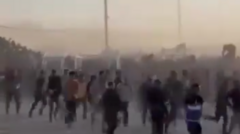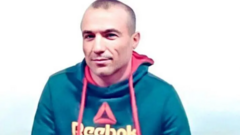Dmitriy Kurashov, the first Russian soldier to face legal proceedings in Ukraine regarding battlefield executions, has entered a court surrounded by significant tensions and historical implications. As the trial unfolds, it sheds light on the horrific conditions of warfare and the ongoing investigations into war crimes committed during the Russia-Ukraine conflict.
**Historic War Crime Trial: Russian Soldier Faces Execution Accusations in Ukraine**

**Historic War Crime Trial: Russian Soldier Faces Execution Accusations in Ukraine**
In a groundbreaking case, a Russian soldier stands trial in Ukraine for an alleged execution of a Ukrainian soldier during combat.
In January 2025, Dmitriy Kurashov, known by his call sign 'Stalker', faced court in Zaporizhzhia for allegedly executing Vitalii Hodniuk, a 41-year-old Ukrainian soldier nicknamed 'Penguin', during a chaotic frontline skirmish. This trial marks a significant moment in the ongoing Russia-Ukraine war, as it is the first of its kind, raising important discussions about war crimes, accountability, and the challenges of justice amid ongoing conflict.
The courtroom echoed with the gravity of the accusations, as Kurashov was escorted by Ukrainian military personnel, reportedly under strict surveillance due to the high stakes involved. Allegations detail that on January 6, 2024, Kurashov shot Hodniuk execution-style while the soldier attempted to surrender, a claim supported by three members of Kurashov's own unit who have agreed to testify against him. This unprecedented trial highlights the scale of alleged war crimes by Russian soldiers during the conflict, with Ukrainian authorities reporting at least 124 similar executions since the full-scale invasion began.
Kurashov, who previously spent time in Russian prisons before being freed to fight, initially pleaded not guilty but later changed his plea to guilty to expedite proceedings. However, he maintains his innocence informally, insisting that another soldier, a medic called "Sedoy," was responsible for the shooting. The complex case is being tangled in layers of war crime allegations, with the United Nations pointing out increased executions by Russian troops amidst the conflict.
Ukraine's state security service (SBU) has been working rigorously to investigate these claims, producing thousands of pages of evidence despite the challenge of retrieving bodies and conducting forensics in war-torn areas. The prosecution relies heavily on the testimony of former Russian soldiers who, now as prisoners, provide key insights into events that took place during the battle. However, the credibility of these witnesses is questioned given their circumstances and potential incentives for testifying against Kurashov.
Kurashov’s trial does not exist in a vacuum; it represents a significant moment in a larger narrative of accountability for war crimes. Within the chilling confines of the courthouse, as Kurashov’s former comrades turn against him, the real-life implications of warfare become painfully clear, confronting the complexities of justice, vengeance, and human rights within a nation at war.
As the case continues, Kurashov faces a potential life sentence if convicted, serving as a stark reminder of the brutal realities faced by soldiers on both sides of the conflict and leaving many to ponder the future of justice in war.


















